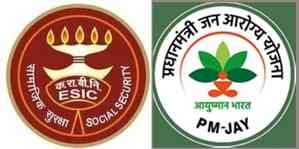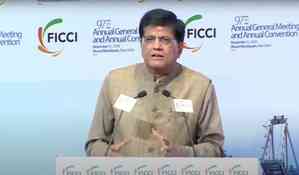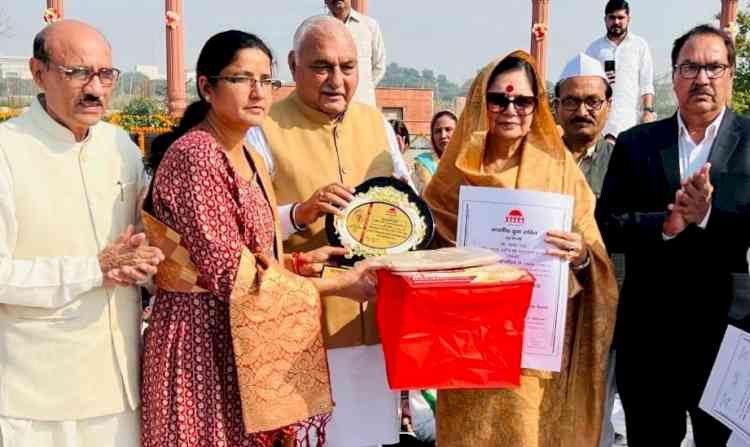Residential sales in Delhi NCR up 23 per cent in Q1, 2021 compared to Q4,2020: JLL
With improved infrastructure and quality projects at attractive prices, the submarket has emerged as a lucrative option for mid-segment homebuyers

New Delhi: Residential market in Delhi NCR gained further momentum in Q1 2021 (Jan-March, 2021) with an increase in new launches as well as sales. New launches in Q1 2021 more than doubled on a sequential basis. Majority (55%) of the launches were witnessed in Noida with launches by reputed developers.
Gurugram contributed 25% of the new launches. These were mainly concentrated in Golf Course Extension Road and Dwarka Expressway.
In this quarter, most of the new launches were in the upper mid (INR 10-15 million) and high-end (> INR 15 million) price segments with projects in premium locations gaining traction.
In terms of demand, sales registered an uptick by 23% as compared to the last quarter. New project launches during the quarter garnered good demand traction as buyers preferred projects by established developers with proven execution capabilities. Noida accounted for nearly half (49%) of the units sold followed by Ghaziabad which contributed 27% of the overall sales in Delhi NCR.
“With improved infrastructure and quality projects at attractive prices, the submarket has emerged as a lucrative option for mid-segment homebuyers. Prices remained range bound across all the submarkets as developers focus on offloading the unsold inventory and drawing buyers with attractive payment terms,” said Manish Aggarwal, Managing Director, North & East India, JLL India.
Residential sales revive across India
Residential sales in Q1 (Jan-March) 2021 recovered to more than 90% of the volumes witnessed in Q1 2020 (pre-Covid) across the top seven cities. The cities including Chennai, Hyderabad, Kolkata, and Pune surpassed the sales volumes of Q1 2020. Overall sales increased by 17% on a sequential basis. Importantly, sales either improved or stayed at similar levels (in Q1 2021 when compared to Q4 2020) in majority of the residential markets under consideration. Mumbai has consistently been the largest contributor to sales in the last four quarters. In Q1 2021, Mumbai accounted for 23% of the sales, followed by Delhi NCR with a share of 21%.
However, Kolkata saw the maximum increase in sales activity in Q1 2021 in comparison to the fourth quarter of 2020. In Kolkata, the offtake of residential units in Q1 2021 was driven by South Suburbs (Joka, Kasba, Behala, Jadavpur, Tollygunje) and East Suburbs (EM Bypass, Rajarhat, Topsia) with a combined contribution of more than 70%.
“The sustained growth in sales presents clear signs of demand and buyer confidence coming back to the market. This has been on the back of historically low home loan interest rates, stagnant residential prices, lucrative payment plans and freebies from developers and government incentives such as the reduction of stamp duty in states like Maharashtra and Karnataka (for affordable housing). The ease of lockdown restrictions and the commencement of the vaccination drive have further aided in bringing buyers back to the market,” said Dr. Samantak Das, Chief Economist and Head Research & REIS, JLL.
“However, the rising concerns of the rapid spread of the pandemic has compelled several state government to lay and enforce stringent lockdown like restrictions. While this is essential to break the chain, it is likely to impact real estate business in the next few months. At the same time, the rapid progress in the rollout of vaccines paired with the ongoing restrictions provides us elbowroom to believe that this is a short-term blip and the market will be back on track sooner than later,” he added.
In the fourth quarter of calendar year 2020, India’s economy returned to growth territory, recording a 0.4% rise in GDP. In tandem with the GDP growth, the pace of recovery in the residential market intensified with sales increasing by 51% when compared to the previous quarter. In Q1 2021, sales of residential units continued an upward trajectory. Sales, at the overall level, increased by 17% on a sequential basis.
The Covid-19 pandemic tilted the scale further in favor of established developers. As the sector shows signs of recovery, prominent developers are expected to be at an advantage and capture a greater share of the market. Homebuyers have become even more cautious in their home purchase decisions. There is an increased preference for investing in projects by developers with an established track record. Only credible developers, who have execution capability as well as quality products, and conduct their business in a transparent manner will be able to operate in the post-covid era in a sustainable manner. Ultimately, this will lead to greater transparency and improved consumer sentiment in the market.
The first quarter of 2021 witnessed new launches of 33,953 residential units, a jump of 27% over the last quarter of 2020. Hyderabad continued to dominate new launches and accounted for more than a fourth of the overall launches during the quarter. Bengaluru, which formed more than 16% of the new launches followed. The markets of Delhi NCR and Chennai witnessed a substantial increase in launch activity during the quarter. New launches are still at 84% when compared to the pre-Covid levels of Q1 2020. Developers across the markets under review remain focused on the completion of under construction projects and clearing their existing inventory.
Development focus on mid and affordable segments continues in Q1 2021 with 69% of the new launches in the sub INR 10 million categories. In the coming quarters, the focus on these price segments is expected to continue with developers trying to reap the benefits of strong pent up demand in these segments. Most of the new launches in the markets of Bengaluru, Hyderabad, and Pune were in the sub INR 10 million category Bengaluru – 77%, Hyderabad – 76%, Pune – 100%.
Unsold inventory increases marginally
Top 7 cities include Delhi NCR, Mumbai, Bengaluru, Chennai, Hyderabad, Pune and Kolkata
Mumbai includes Mumbai city, Mumbai suburbs, Thane city and Navi Mumbai
As new launches outpaced sales, unsold inventory at various stages of construction across the seven markets under review increased marginally from 462,380 units to 470,750 units. Mumbai, Delhi NCR, and Bengaluru together account for 70% of the unsold stock. An assessment of years to sell (YTS) reveals that the expected time to liquidate this stock has increased from 4.2 years in Q4 2020 to 4.6 years in Q1 2021.
It’s a “buyer’s’ market with price continuing a downward trendResidential prices in the majority of India’s residential markets have remained stagnant in the past few years. In Q1 2021, prices remained largely stagnant when compared to the previous quarter, across all the seven markets under review. This being said, it is important to point out that few developers in certain markets are providing moderate price discounts to boost sales. Moreover, developers are offering attractive freebies including payment schemes such as no EMIs for a year, no stamp duty and so on to attract homebuyers who pressed ‘pause’ in the last few months. This has led to a reduction in ‘effective prices. This rationalisation combined with reduced home loan rates has further improved affordability in the residential market.
As developers continue to focus on recovering the volumes lost amidst the pandemic and gaining a foothold in their respective markets, prices are expected to be largely range-bound across most of the markets in the short-term.


 cityairnews
cityairnews 












